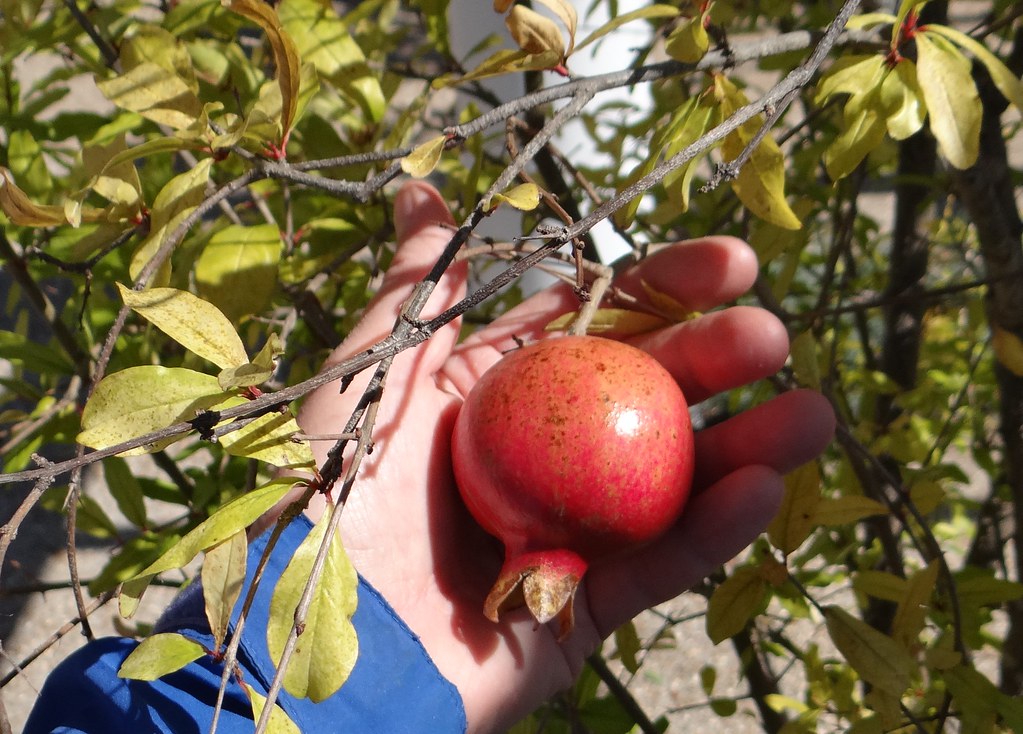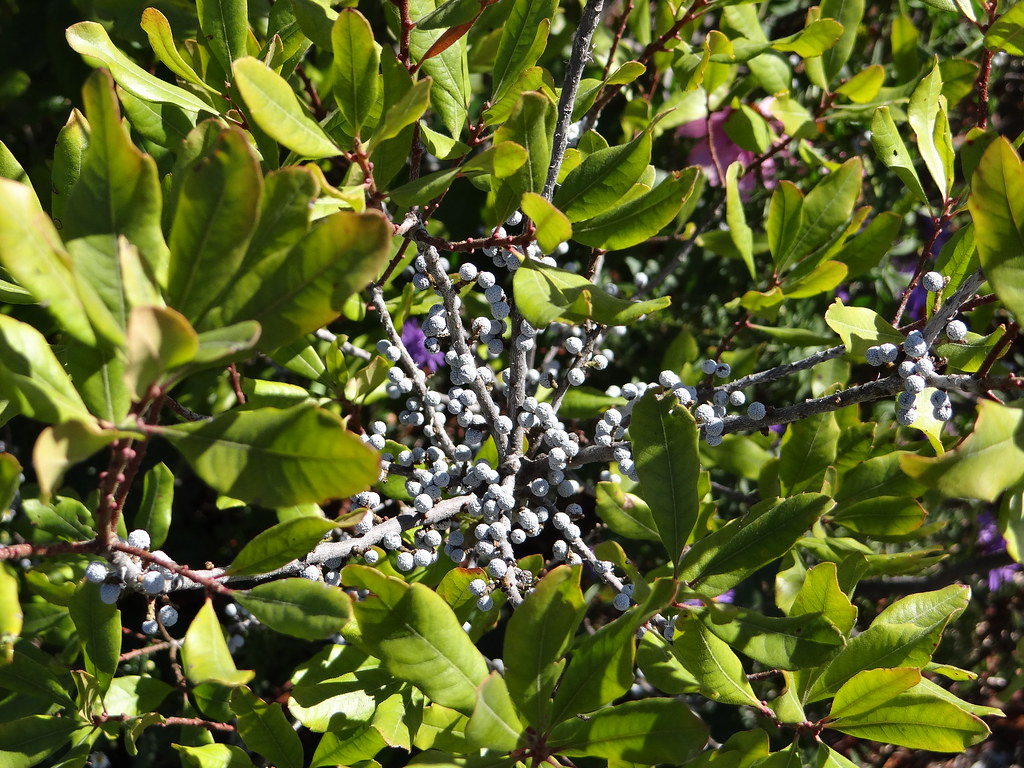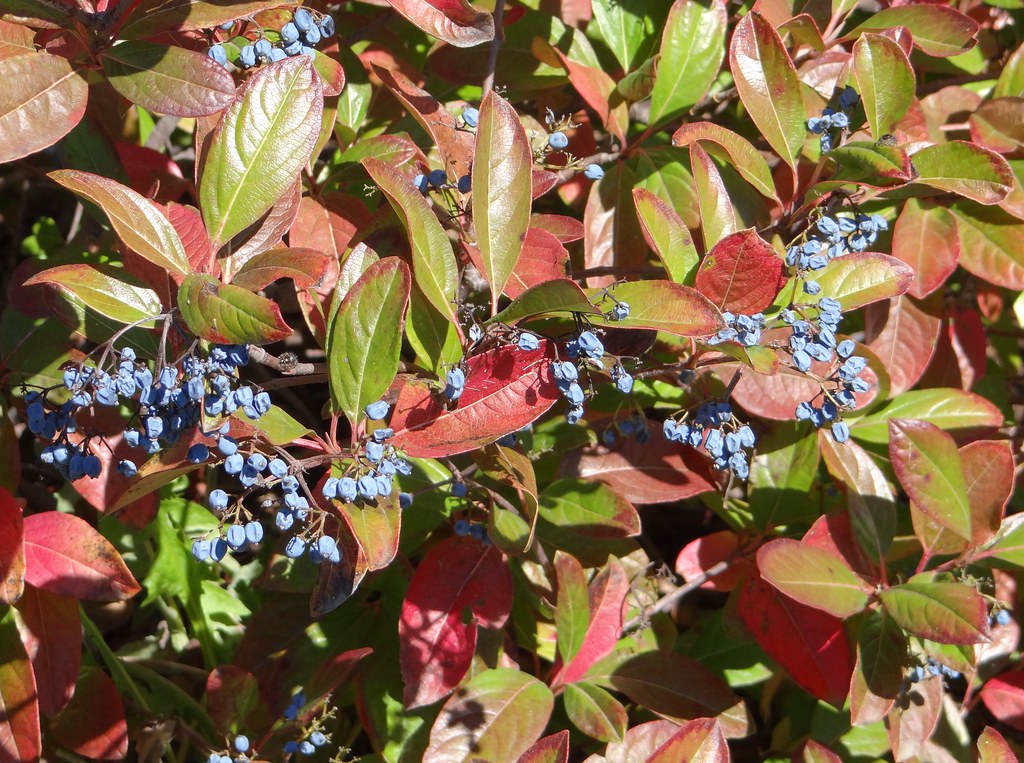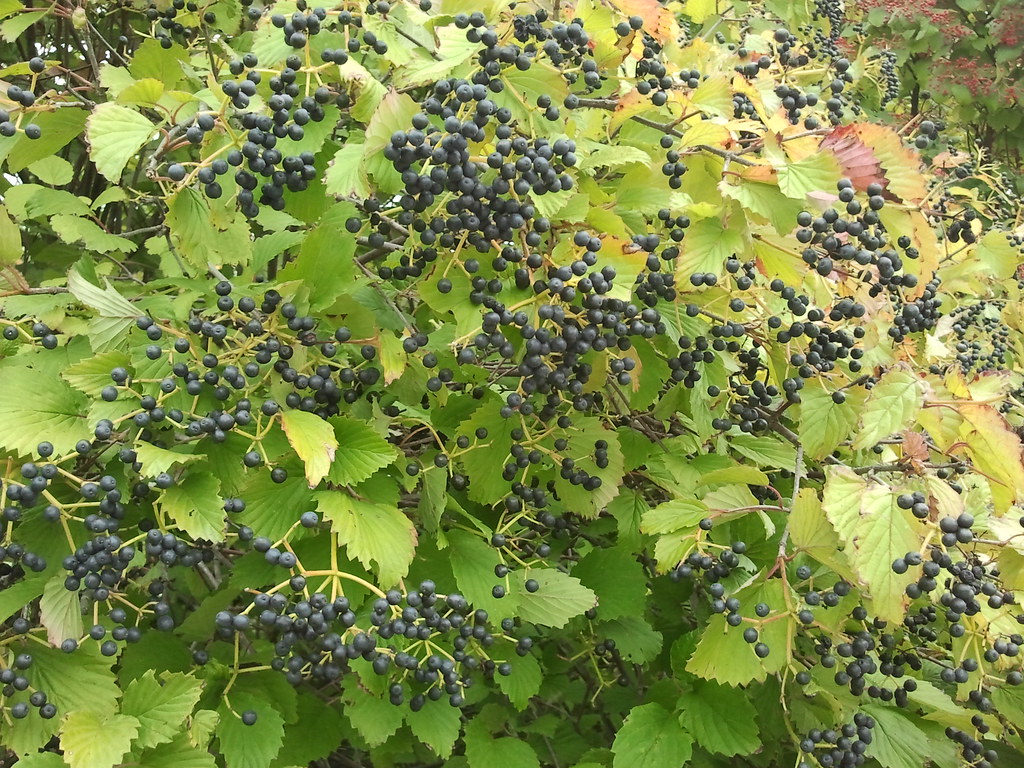We had a hard freeze at Powell Gardens down to 29F! Tender flowers have now given way to those hardy flowers and fruit of fall that are oblivious to the tribulations of Jack Frost. Here's a post of some of the gardens' plants with ornamental fruit that add color and seasonal charm to our garden in Indian Summer.

Viburnums are well-known for their ornamental fall fruit and this 'Asian Beauty' Linden Viburnum (Viburnum dilatatum) that is a perennial winner for red fruit -- even after this last horrible summer! Linden Viburnum is native to Japan and can escape east of here, but its seedlings are held in check by our often droughty summers. Look for this Viburnum south of the Visitor Center.

Hollies are probably the most well-known of fall (and winter) fruiting plants because of their appeal for holiday decor which they deserve! The evergreen hollies' fruit has finally turned red for the season and here is a picture of 'Greenleaf' hybrid American Holly (Ilex x attenuata) growing near the Visitor Center. This is a hybrid between the true American Holly (Ilex opaca) and the Dahoon (Ilex cassine) native to the Gulf states. It displays hybrid vigor and can grow several feet in one year , but it is also touchy to a severely cold winter and susceptible to iron chlorosis (note these leaves are a bit yellow) in our soils. It's a beautiful plant in a sheltered site with acidified soil.

Here's a branch of one of my favorite crabapples: Zumi Crabapple (Malus x zumi 'Calicarpa' now Malus sieboldii) on the Island Garden. Its tiny red crabapples are stunning against yesterday's incredible blue sky. These tiny apples are edible to us but a favorite of songbirds to eat in late fall and winter. Birds can see color so many small fruits are showy red so they will entice birds to spread their inner seeds far and wide. Zumi Crabapple becomes a large crabapple (20 feet tall plus) with great character as it ages. It is currently out-of-favor to grafted dwarf selections that are just not that appealing to me -- so many of the new ones look like retarded lollipops in my mind. They do make sense in a small landscape where space is a premium.

Here's one bigger red fruits: a 'Wonderful' Pomegranate (Punica granatum) in the Heartland Harvest Garden Vineyard. Pomegranates have been grown by humans as food since time immemorable (there's no bird that can gulp down this big fruit!). Pomegranates are currently very popular for their very nutritious and healthy juice rich in anti-oxidants and other compounds. Kansas City area gardeners should know it also does well here if grown in a container and brought in for just the coldest part of winter. We leave ours out until temperatures are predicted to fall below 20F (they are hardy into the 10'sF). You can just put them into a garage for storage in the coldest months as they are deciduous. In spring put them back outside and they will have brilliant scarlet flowers followed by the beautiful (and delicious) fruit.

Persimmons are one of the largest true berries we have in the garden. This is a 'Ruby' Persimmon (Disopyros virginiana) selected for its larger fruit than wild persimmons. They are over 2" across and finally starting to ripen -- this variety's leaves were killed by our freeze but the fruit are only made better by the cold. Look for this persimmon in the Heartland Harvest Garden just past the Apple Celebration Court on the left (south) side of the path.

Here's another Crabapple but this time with bronzy orange crabapples which, like all apples, are called pomes and not berries. It's the Tea Crabapple (Malus hupehensis) which frames the west/Visitor Center entrance to the Island Garden. These are another favorite crabapple of mine growing into a beautiful vase shape but also growing quite large over time. They are called tea crabapples for 2 reasons that I have read: 1) because you can make an actual tea from their leaves and 2) because ancient trees create beautiful spaces to have a tea ceremony under in their native homeland of China. They can live a long time (100+ years) and future garden visitors may enjoy quite a space created by them as they arch over entrance seating area to the Island Garden. It just reminds me how young Powell Gardens is (25 years old next year) -- my what a garden it will be in 2112!!

On the opposite end of the color wheel we have a few berries in the cool colors like these Northern Bayberries (Myrica pennsylvanica). Botanically speaking these fruit are drupes like a plum and yes they are the waxy fruit used in making bayberry candles (it has another common name "candleberry"). Bayberries are dioecious so are either male or female and obviously this is a female plant with fruit (I always look for berries when buying one in a nursery and make sure you get at least one male for pollination). The aromatic leaves can be used as a substitute for bay leaf in cooking but I just enjoy this plant for its lovely aroma when brushed or given off on a warm day. Bayberries can be found in several locations around the garden including the Perennial Garden arbor where they have grown huge to the Heartland Harvest and Island Gardens. These berries too are loved by songbirds in the winter.

Here's another viburnum with some of the most beautiful blue fruit: the Witherod or Possumhaw Viburnum (Viburnum nudum). There are many selections of this viburnum on the market but beware that 2 varieties are needed for cross pollination and full fruit set. These fruit are so beautiful through the whole season: they start out beautiful sage green and gradually change, one-by-one, to pink; then they gradually mature to blue! After a freeze they are blue and shriveled like in the picture and are actually edible. Another common name for this beautiful shrub is "wild raisin." 'Brandywine' and 'Winterthur' are popular available varieties but this one was just bought as a pollinator with no named variety and is growing on the edge of the Fountain Garden.

The blue fruit of Arrowwood Viburnum (Viburnum dentatum) is also a stunner in late summer into fall with its blue fruit that are now gradually wearing off their waxy "bloom" so changing color from blue to black. This is another plant great for birds but it got its name because shoots of the plant were tough and straight so used for arrows.
So enjoy Powell Gardens in its beautiful fall splendor of "berried treasures" -- fall color is beginning and should be peaking in a week or two -- we'll keep you posted for that.
Thursday, October 11, 2012
Fall Fruit and the "Berried Treasures" of Powell Gardens
Posted by
Kansas City's botanical garden
at
10:12 AM
![]()
![]()
Subscribe to:
Post Comments (Atom)


No comments:
Post a Comment